Tech Talk
19 Oct 2022
Martin Mac 500 and Martin Mac 600
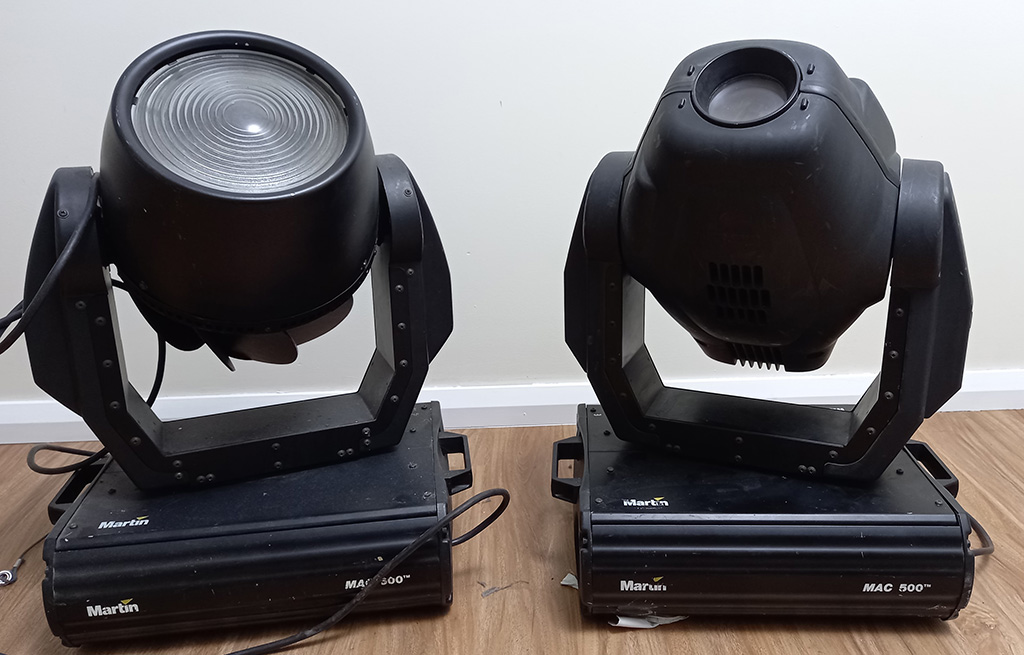
Subscribe to CX E-News
A look back at the lights that put Martin on the map
First released in 1997 by Martin Professional, the Martin Mac 500 Profile and Mac 600 Wash were sold alongside each other marketed as a complimentary wash and profile option. Known for their durability, both were popular lights that were specced worldwide, including Australia. They quickly gained a reputation for being simple to service and work on, despite being quite high tech at the time. They were versatile and user friendly from all perspectives, as an operator, a technician, or as set up crew.
Why sell a wash and a profile together as part of the same ‘family’?
When putting a lighting rig together, it can be advantageous to get your spots and your washes from the same ‘family’ of lights as they will typically be of similar power output, have the same colour mixing capabilities and even the same parts.
Wash vs Profile
A wash light typically features a larger lens, casts a larger, flatter field of light, and has more frosts and colour temperature features. They are usually used when you need to light a larger area such as a stage
A profile typically has gobo wheels, shutter kits and casts a sharper, more focussed beam of light. Typically used to create beams of light through smoke, project gobos or to light specific objects, such as lecterns or specials.
The Mac 500 and Mac 600 were modular lights that had a lot of interchangeable parts. Both were able to fit into the same flight case, making transport much more convenient. They also used the same rigging hardware and could be mounted and configured to any orientation. The base and the yokes were basically the same, the way to tell them apart is from the design of the head of the light.
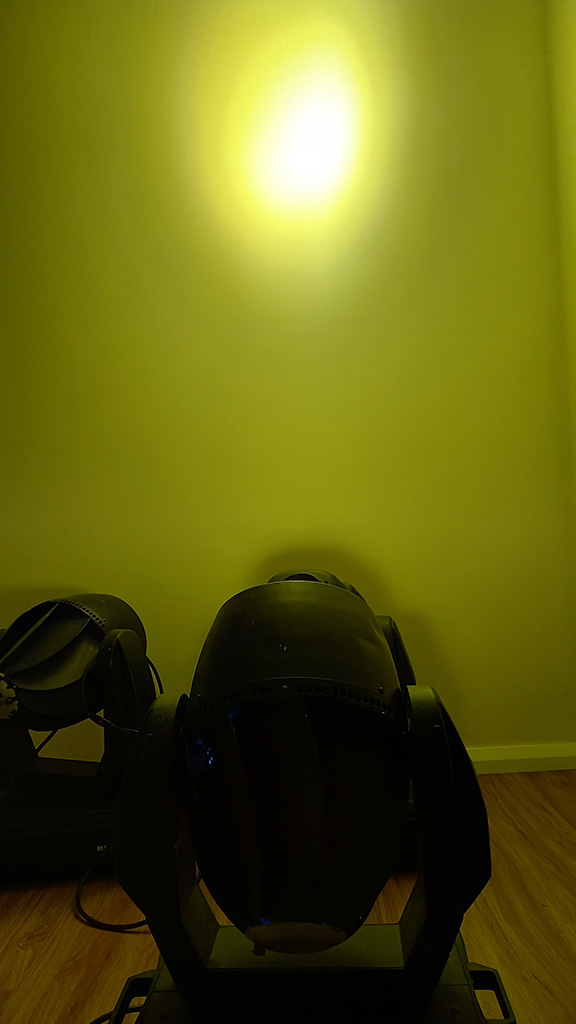
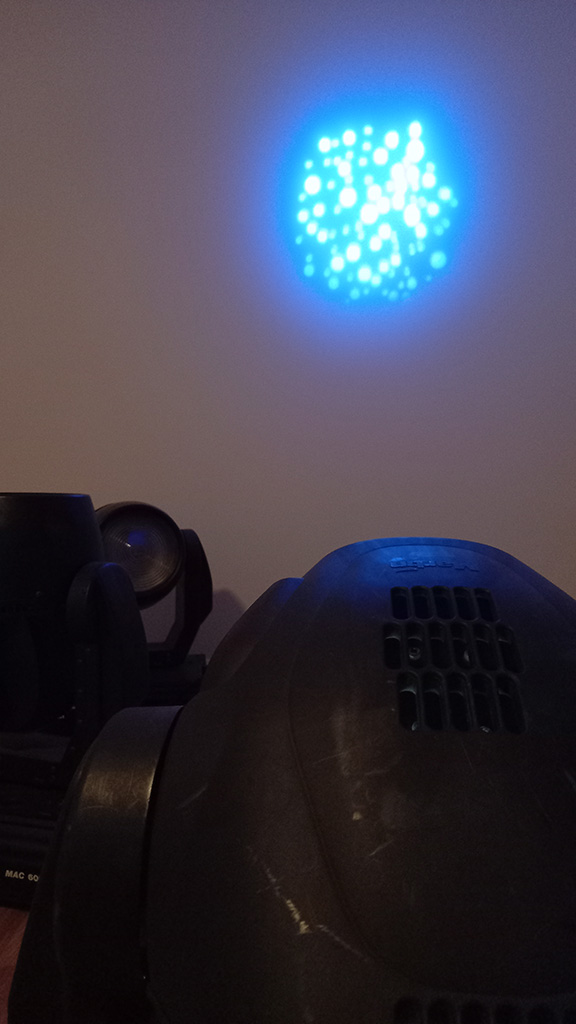
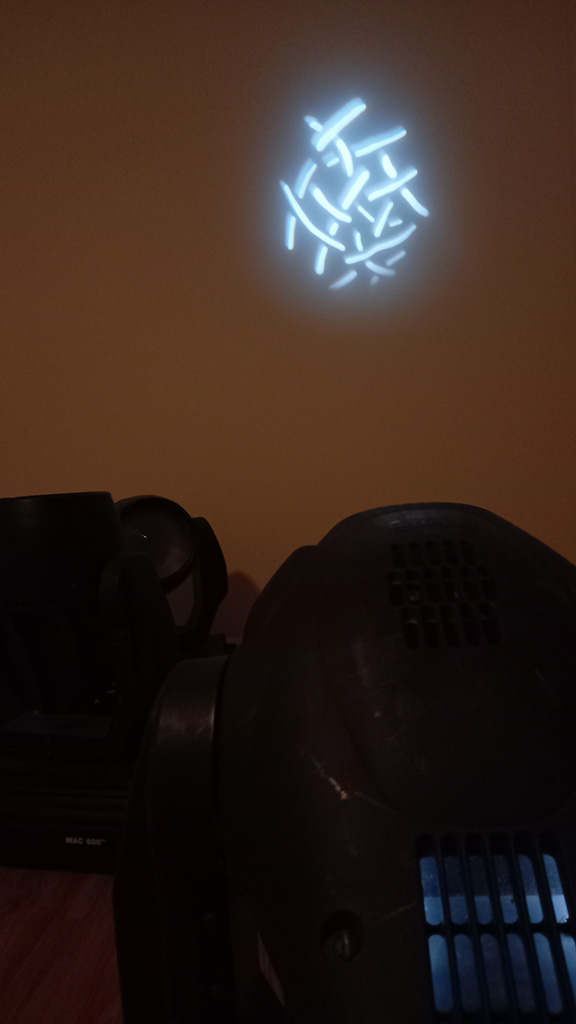
They both drew 750w of power and used the same 575w discharge lamp. Both fixtures had a pan/ tilt range of 440°/306°. They were the same length and width, with the Mac 500 being slightly taller and slightly heavier. Both used 3 pin DMX, not 5 pin as is standard today, but could run on 5 pin DMX with an appropriate adaptor.
Common issues for both lights were yoke covers cracking and ballast issues as well as overheating, which can lead to cracked filters, and in extreme cases, warped wheels. Overheating was more of an issue in the Mac 500.
Given that in 1997, DMX-able, intelligent lighting fixtures were a relatively recent thing and many of the features were considered quite ‘new’, there were a few features that stood out, such as:
- An option to disable the pan and tilt reset. What this would do is stop the light moving during its reset cycle when you first powered them up. This meant that you could pre-address or change settings of the light without having to take them out of the case. Although a seemingly small feature, it saved hours of prep time and avoided double handling. To enable this, all you had to do was press and hold ‘menu’ and ‘enter’ at the same time on start up.
- A setting to determine the indexable wheels (colour wheel/ gobo wheel) rotates in one direction only or takes the shortest path to its next position, further enhancing the smoothness of operation.
- A safety feature called a ‘no hot strike’, which can prevent lamps from blowing too early as well as protect the internals of the light. What this meant was that you cannot lamp on the fixture for eight minutes after lamping it off. Although a well warranted safety feature that saved countless hours and dollars in repairs, it could get rather frustrating if you had to do a reset mid show.
Although they shared many similarities, they were also very different.
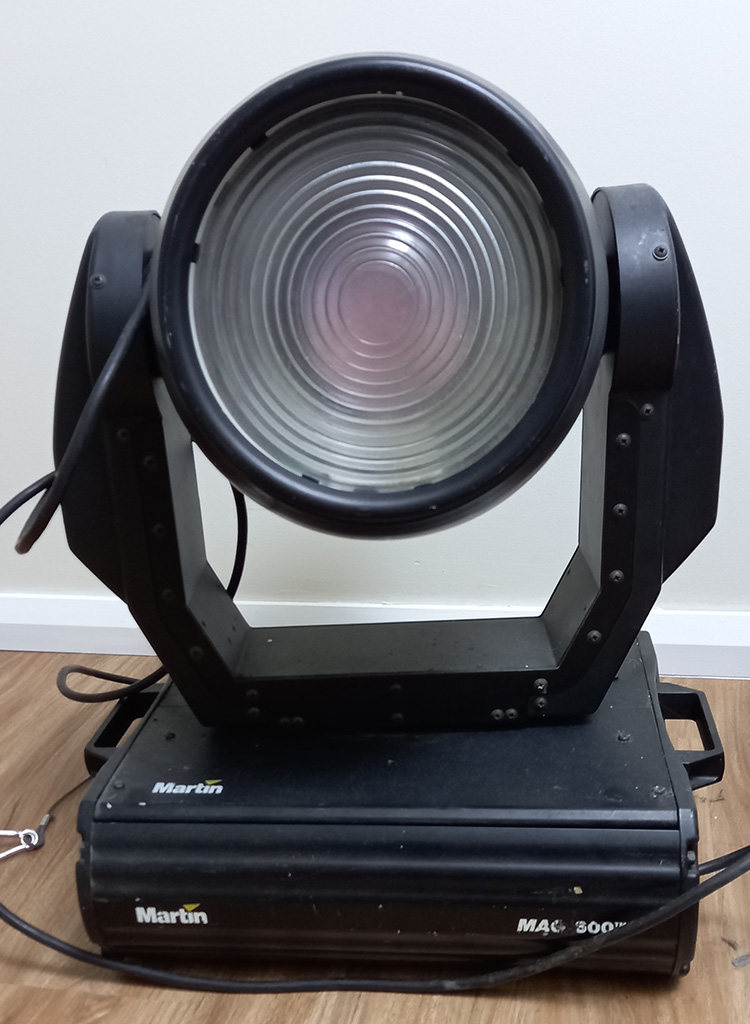
Mac 600 Wash Features
– CMY colour mixing system
– 4 position colour wheel plus open
– Frost and indexable beam shaper
– Strobe effect up to 8 Hz, random strobe
– 18°, 25° (standard) and 65° lens options
– Mechanical dimming
The Mac 600 was the wash light of the pair. It weighed about 31.5kg and claims a 20,500 lumen output. The light can be run in either 10 channel or 14 channel mode. The Mac 600 was known not only for being a bright, punchy market leading wash light, but also for its smooth dimming curve and smooth movements. The Mac 600 featured a Fresnel lens.
Originally designed for use in lighthouses by Augustin-Jean Fresnel (1788 – 1827), the Fresnel lens is designed so that a lens can have a large aperture while projecting a concentrated beam. It has seen extensive use in entertainment lighting. There have been many other uses for Fresnel lenses over the years including but not limited to:
– Cars, namely sealed beam headlights
– Magnifiers, Fresnel lenses can be used as hand-held magnifiers
– Camera lenses and reflectors
– They are used to concentrate sunlight onto solar panels
The 600 featured a CMY/subtractive colour mixing system and is based on three circular, graduated dichroic colour filters: cyan, magenta, and yellow (CMY). Each colour can be added from 0 to 100%. The colour wheel contains red, green, and blue dichroic colour filters plus a 5600K to 3400K colour correction filter and open white. The CMY colour mixing system was not featured on the Mac 500.
Two beam shapers allow you to widen and flatten the beam. Very useful when trying to light a stage. A single frost filter on the same wheel softens the beam. The high-speed mechanical shutter allows light to be flashed at up to 8 Hz.
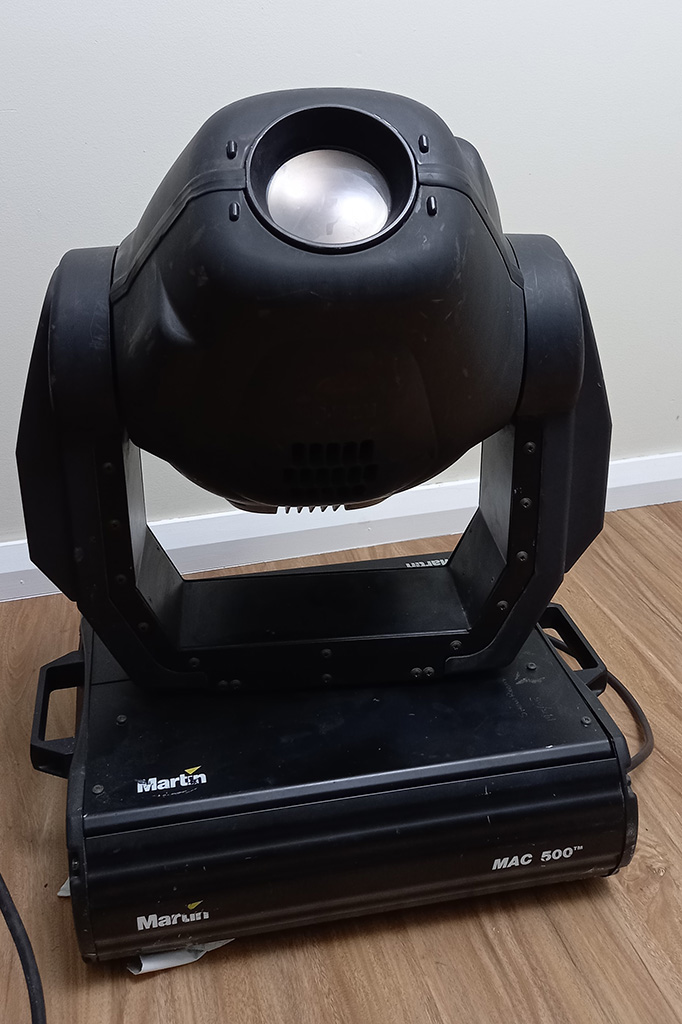
Mac 500 Profile Features
– 1 fixed Gobo Wheel with 9 gobos plus open.
– 1 Rotating Gobo Wheel with 6 gobos plus open.
– 2 colour Wheels each with 9 colour slots plus open.
– Motorized iris and focus.
– Rotating prism.
Known in its time for offering an impressive array of effects and its sharp focus, the Mac 500 profile weighed 32.8kg and could be run in either 12 channel mode or 16 channel mode. It had a claimed output of 9 000 lumens.
The Mac 500 has two 9-position plus open colour wheels, therefore giving the operator 100 different colour combinations. There are four colour temperature filters and 14 dichroic colours, which offer 67 different combinations. There is one1 fixed gobo wheel which contains nine different gobos, plus an open position. There is also a rotating gobo wheel in the Mac 500 which has five rotating gobos, plus open. The Mac 500 also has a three-facet rotating prism/ variable frost.
Pan and tilt resolution could be set to be either 8-bit or 16-bit. With 8-bit pan/tilt resolution, the pan and tilt are divided into 256 equal increments. With 16-bit mode, the pan range is divided into 32 768 increments and the tilt range into 45 567 increments. This allowed for much finer, smoother and more accurate pan and tilt movements. The pan/ tilt range was 440°/306° in both 8 bit and 16 bit modes.
The beam can be focused from as close as two metres, a large feat at the time for a large moving light. The diameter of the iris went from 100 percent (fully open) down to 15 percent. Smooth, high resolution 100 percent dimming is coupled with a shutter capable of strobe effects up to 23 Hz. You also have the option to choose the dimming curve. You can select between linear or simulated tungsten dimming.
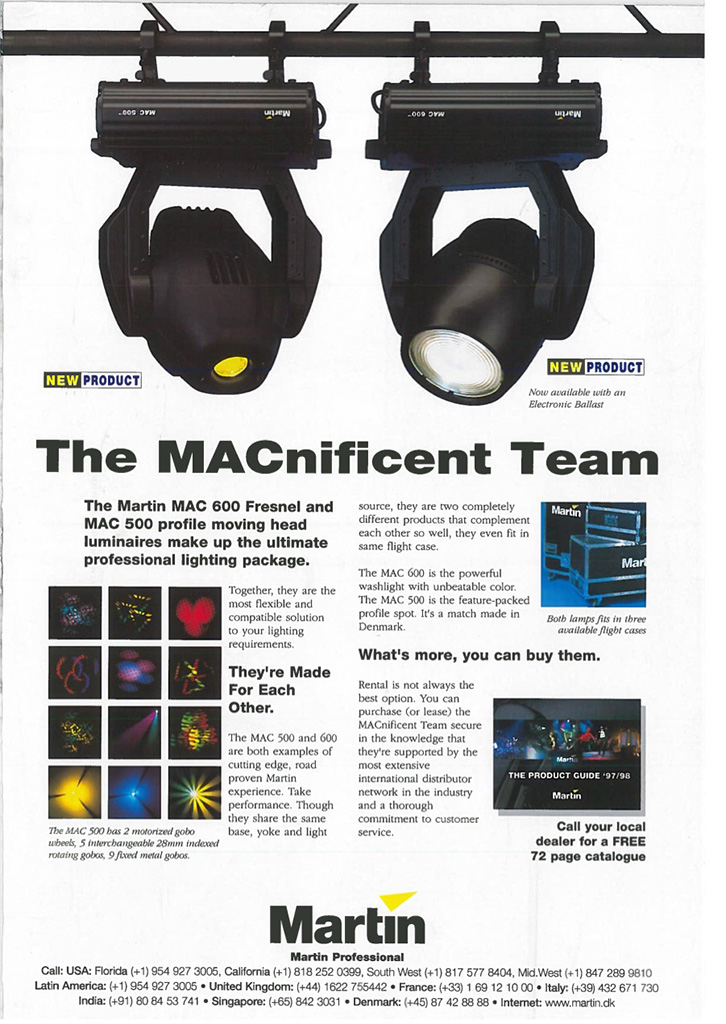
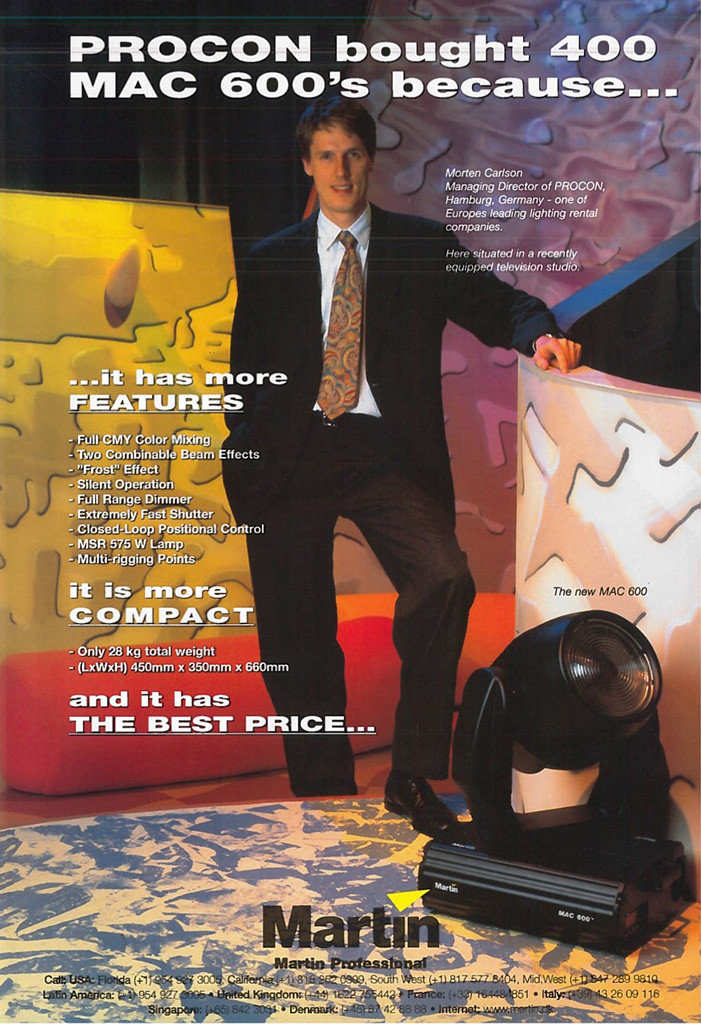
The Mac 500 and Mac 600 are now 25 years old. It is unknown how many working examples still exist and how many, if any, are still in service. The pair would be Martin’s best offering and arguably the industry standard in spot and profile movers at the turn of the century. They were a sales success for Martin and really put them on the map as a manufacturer of quality, intelligent DMX operated stage lights. This reputation continues today.
Subscribe
Published monthly since 1991, our famous AV industry magazine is free for download or pay for print. Subscribers also receive CX News, our free weekly email with the latest industry news and jobs.




